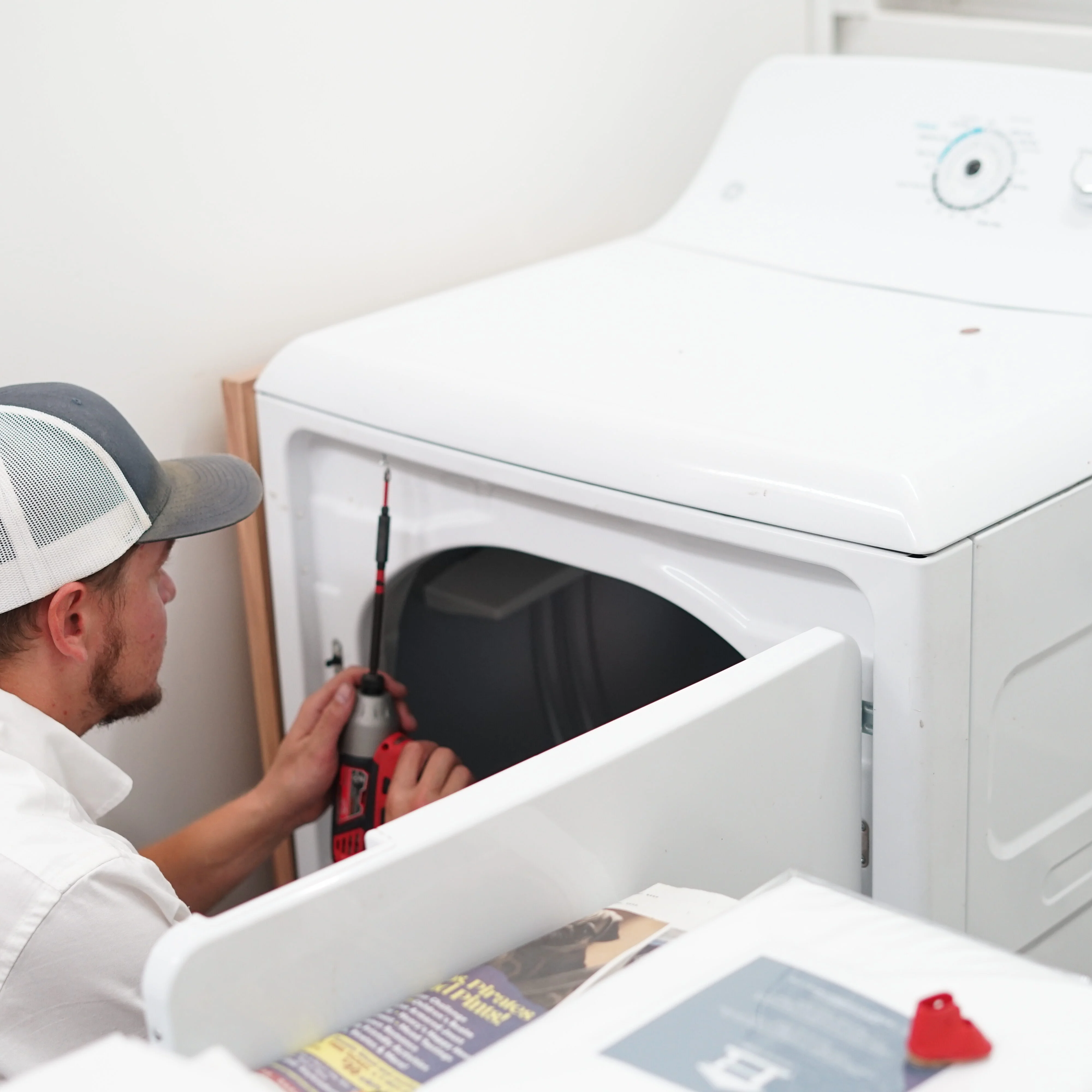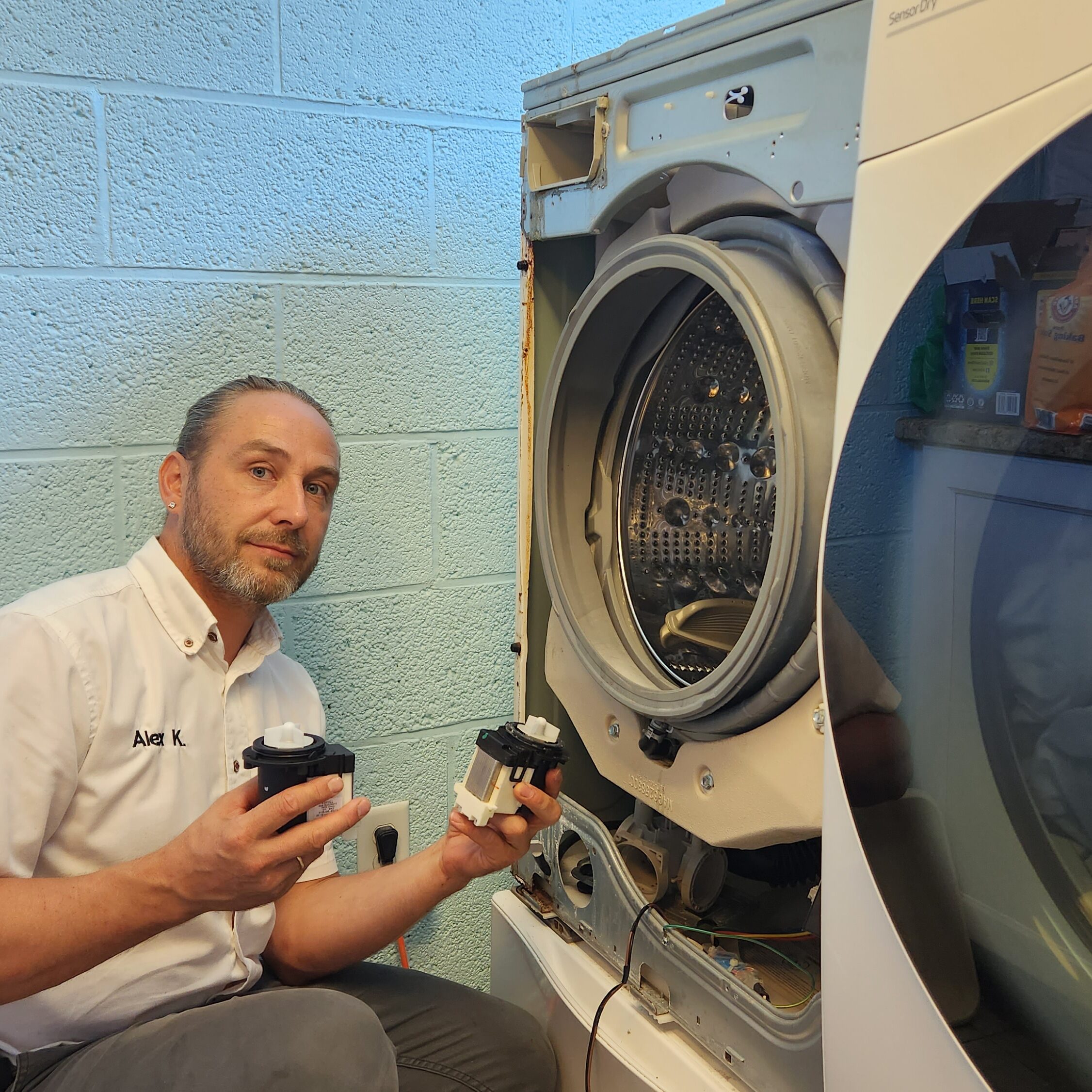Is your Frigidaire dryer tumbling clothes without getting warm? This can be frustrating, especially when you’re in a hurry and need your laundry done fast.
You expect your dryer to work perfectly every time, but when it stops heating, it throws your whole routine off. Don’t worry—this problem is common and often easier to fix than you think. Keep reading, and you’ll learn simple steps to find out why your dryer isn’t heating and how to get it back to drying efficiently.
Your clothes—and your schedule—will thank you.

Credit: smartapplianceservices.com
Common Causes Of No Heat
When a Frigidaire dryer stops heating, it fails to dry clothes properly. Many parts can cause this heating issue. Understanding the common causes helps in quick troubleshooting. This section breaks down the main reasons why your dryer might not heat.
Thermal Fuse Issues
The thermal fuse prevents the dryer from overheating. If it blows, the dryer will not produce heat. A faulty thermal fuse must be replaced to restore heat. Testing the fuse with a multimeter checks if it is working.
Heating Element Problems
The heating element creates the heat inside the dryer. Over time, it can break or burn out. A broken heating element means no heat in the dryer. Inspecting the element visually or with a multimeter helps find faults.
Thermostat Malfunctions
Thermostats control the dryer’s temperature. A bad thermostat can stop the heating cycle. It may cause the dryer to cool down too soon. Testing and replacing a faulty thermostat fixes heating problems.
Power Supply Concerns
The dryer needs the right power to heat correctly. A weak or interrupted power supply can cause no heat. Check if the dryer gets full voltage from the outlet. Loose or damaged wires may also stop heating.

Credit: smartapplianceservices.com
Checking The Thermal Fuse
Checking the thermal fuse is an important step when your Frigidaire dryer is not heating. The thermal fuse acts as a safety device. It stops the dryer from overheating. If the fuse blows, the dryer will not heat at all. This section explains how to find, test, and replace the thermal fuse.
Locating The Thermal Fuse
The thermal fuse is usually on the dryer’s blower housing or near the heating element. First, unplug the dryer for safety. Remove the back panel or front panel depending on your model. Look for a small, rectangular white or silver component with two wires connected. This is the thermal fuse. Handle it carefully to avoid damage.
Testing For Continuity
Use a multimeter to test the thermal fuse for continuity. Set the multimeter to the lowest ohms setting. Remove the wires from the fuse terminals. Place the multimeter probes on each terminal. A reading near zero means the fuse is good. No reading or infinite resistance means the fuse is blown and needs replacement.
Replacing The Fuse
Buy a replacement fuse that matches your dryer’s model. Remove the blown fuse by disconnecting the wires and unscrewing it. Attach the new fuse in the same place. Reconnect the wires firmly. Replace the dryer panel and plug the dryer back in. Test the dryer to see if it heats properly now.
Inspecting The Heating Element
When a Frigidaire dryer is not heating, the heating element often causes the problem. This part warms the air that dries your clothes. Checking the heating element can help find the issue fast. A broken heating element means no heat and longer drying times.
Careful inspection of the heating element can save repair costs. It also helps avoid buying a new dryer unnecessarily. Below are clear steps to access, check, and replace the heating element if needed.
Accessing The Heating Element
First, unplug the dryer from the power source. Locate the back panel of the dryer. Use a screwdriver to remove the screws holding the panel. Carefully take off the panel to see inside the dryer.
The heating element is usually near the blower wheel. It looks like a coil or wire wrapped in a small metal frame. Handle the parts gently to avoid damage.
Signs Of Damage
Look closely at the heating element coil. Check for breaks, burns, or melted sections. A broken coil cannot heat the air. Also, look for signs of rust or corrosion.
Use a multimeter to test the heating element for continuity. No continuity means the element is faulty. This is a clear sign it needs replacement.
Replacement Steps
After confirming damage, remove the screws holding the heating element in place. Carefully disconnect the wires attached to it. Take note of the wire positions to reconnect later.
Install the new heating element by connecting wires in the same order. Secure the element with screws. Replace the back panel and tighten screws firmly.
Plug the dryer back in and run a test cycle. Check if the dryer heats up properly. This simple repair can restore your dryer’s heating function quickly.
Testing The Thermostat
Testing the thermostat is a key step to fix a Frigidaire dryer that does not heat. The thermostat controls the dryer’s temperature. It stops overheating and keeps clothes safe. A broken thermostat can stop the dryer from heating at all.
Knowing how to test the thermostat can save time and money. It helps find the exact problem inside the dryer. This section explains the types of thermostats, how to test them, and when to replace them.
Types Of Thermostats In Dryers
Dryers have different thermostats. The main types are the high-limit thermostat and the cycling thermostat. The high-limit thermostat stops the dryer from getting too hot. The cycling thermostat turns the heating element on and off. It keeps the dryer at the right temperature.
How To Test Them
First, unplug the dryer for safety. Open the back panel to find the thermostat. Use a multimeter to check it. Set the multimeter to the continuity setting. Touch the probes to the thermostat terminals. A beep or zero reading means it works. No beep or infinite reading means it is bad.
When To Replace
Replace the thermostat if it shows no continuity. Also, replace it if it looks damaged or burnt. A faulty thermostat can cause no heat or overheating. Always choose the correct part for your Frigidaire model. Installing a new thermostat often restores the dryer’s heating function.
Power And Electrical Checks
Power and electrical issues often cause a Frigidaire dryer not to heat. Checking these areas first can save time and avoid costly repairs. Start with simple steps to make sure the dryer gets enough power. This helps find the root of the heating problem quickly.
Verifying Power Supply
Make sure the dryer is plugged into a working outlet. Try plugging in another device to test the outlet. A dryer needs a 240-volt power supply to heat properly. Check the power cord for any damage or loose connections. No power means no heat.
Inspecting Wiring Connections
Unplug the dryer before inspecting wires. Look for signs of wear, burns, or loose wires inside the dryer. Damaged wires can stop the heating element from working. Tighten any loose connections carefully. Proper wiring ensures the heating element gets power.
Resetting Circuit Breakers
Dryers have dedicated circuit breakers in the home’s electrical panel. Find the breaker for the dryer and switch it off. Wait a few seconds, then turn it back on. Sometimes breakers trip and cut power to the dryer. Resetting restores the power and heating function.

Credit: www.youtube.com
Maintenance Tips To Prevent Heating Issues
Maintaining your Frigidaire dryer helps keep it heating well. Simple care stops many heating problems. Follow these tips to keep your dryer running smoothly. Regular maintenance saves time and money on repairs.
Cleaning Lint Filters And Vents
Clean the lint filter after every load. Lint buildup blocks airflow and causes heating issues. Check the dryer vent outside your home regularly. Remove any lint or debris that clogs it. Clear vents help your dryer heat evenly and work faster.
Regular Dryer Inspections
Look at your dryer’s parts often. Check the drum, belt, and heating element for wear. Listen for strange noises that may signal problems. Early detection prevents bigger damage. Schedule a professional check-up once a year for safety.
Avoiding Overloading
Do not overload the dryer. Too many clothes stop air circulation. Clothes stay wet and the dryer works harder. Dry smaller loads for better heat and less strain. Overloading shortens your dryer’s life and causes heating faults.
When To Call A Professional
Knowing when to call a professional for your Frigidaire dryer saves time and stress. Some problems need expert skills. Trying to fix complex issues can cause more damage or injury. Professionals have the right tools and knowledge to handle tough repairs safely. This section helps you decide when to call a technician for your dryer that is not heating.
Complex Repairs
Some repairs require special tools and training. Issues like faulty heating elements, broken thermostats, or wiring problems are hard to fix. Opening electrical parts without skills can be risky. A professional technician can diagnose and repair these problems properly. This ensures your dryer works well after the repair.
Safety Considerations
Dryers use electricity and heat, which can be dangerous. Incorrect repairs may cause electric shock or fire. Professionals follow safety rules and use protective gear. They know how to avoid accidents during repair. Calling an expert keeps your home and family safe.
Warranty And Service Options
Your Frigidaire dryer may have a warranty. DIY repairs might void this warranty. Professional service centers often honor warranties and offer guarantees. They use original parts and provide reliable repairs. Choosing authorized service helps protect your investment.
Frequently Asked Questions
Why Is My Frigidaire Dryer Not Heating?
A common cause is a faulty heating element or blown thermal fuse stopping heat production.
How Do I Test The Heating Element In My Dryer?
Use a multimeter to check for continuity; no continuity means the element needs replacement.
Can A Clogged Vent Cause A Frigidaire Dryer Not To Heat?
Yes, blocked vents reduce airflow, causing the dryer to overheat and stop heating.
What Role Does The Thermal Fuse Play In Dryer Heating?
The thermal fuse cuts power to the heating element if the dryer overheats.
How Often Should I Clean My Dryer Vent To Prevent Heating Issues?
Clean the vent at least once a year to maintain proper airflow and heating.
Conclusion
A Frigidaire dryer not heating causes slow drying and frustration. Check the power supply and lint filter first. Simple fixes often solve the problem quickly. Sometimes, parts like the heating element or thermostat need replacement. Regular cleaning keeps your dryer working well.
Don’t ignore warning signs like no heat or strange noises. Timely action saves money and effort. Keep your laundry routine smooth and stress-free. Small steps make a big difference in dryer performance.
